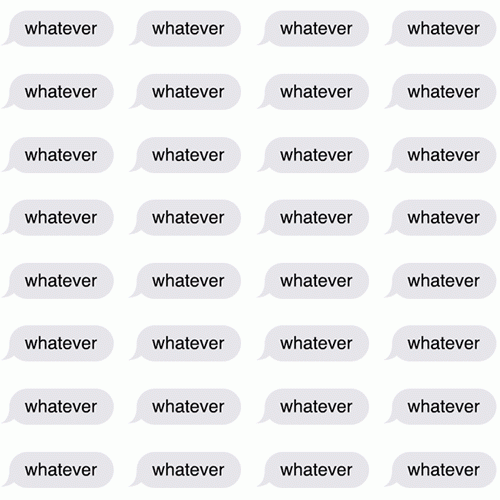Video
youtube
One Netflix show in particular, Sex Education, is talking about adolescent sexuality. Watch if you are interested!
0 notes
Text
My personal takeaways
Take this as you will, but I think sexting is becoming a normal part of adolescent development and sexuality. Technology is so integrated into our everyday lives that it only makes sense our relationships have some sort of technological aspect as well. I strongly believe that the common narrative of sexting being a stupid, shameful decision (that mainly harms young girls), further shames young people from feeling comfortable exploring their sexuality AND deters young people from speaking up and seeking help if they were coerced into sexting or if their boundaries were violated and their sexts were distributed without their consent.
I feel it is important for all social workers to be aware of the need for adolescents to explore their sexuality and help promote conversations of doing so in safe, consensual ways. We need to accept that young people have sex, and focus on ways to nurture this development instead of shaming their NORMAL behaviors.
#thankuforcomingtomytedtalk

0 notes
Quote
The American Civil Liberties Union (ACLU) is working in various jurisdictions to prevent teens from receiving felony charges and being listed as sex offenders in cases of consensual texting.
Therapists, Sexting, and the Law
0 notes
Text
Psychology and Sexting
Sexting can impact an adolescents’ mental health. Sexting can result in feeling rejected or humiliated, and is associated with symptoms of depression, impulsivity, and substance use
This study did not find significant differences when controlling for gender, age, and race - the impact on mental health was similar for each group

(Temple, van den Berg, Ling, Paul, & Temple, 2014)
0 notes
Text
(biopsycho)SOCIAL and sexting
Many aspects of adolescents’ social lives, communities, and cultures may impact sexting
Group norms: adolescent men are expected to collect sexts to show power and higher social status among peers, while adolescent girls may sext to feel more popular
(Ouytsel, 2015)
Cultural elements: our society is reliant on social media and technology, opening up more possibilities for sexting. Adolescent sexuality is often colored by shame and secrecy in the United States, and sexting is becoming a normal part of adolescent sexual development now. Experts say having a conversation with adolescents and educating them on safety and risks is important without shaming them. Sexting can happen in healthy, consensual relationships and be beneficial!
(Klass, 2018)
0 notes
Text
Biology and sexting
There is a common narrative in our society that labels adolescents as hormonal due to the changes they go through biologically. Some believe that the increase in hormones results in increased sexting for adolescents, painting the picture that adolescents are not in control of their own actions. While it is true that adolescents’ sexual desires increase with the onset of puberty and increased hormonal levels, this narrative takes away the adolescents’ decision making and autonomy. It also contributes to the culture of shame and fear surrounding adolescents who decide to sext by further stigmatizing the action instead of educating young people on how to be safe and responsible with their own sex lives
(Angelides, 2013)
0 notes
Text
Biopsychosocial model
This model looks at how biology, psychology, and socio-environmental factors interact

0 notes
Quote
In the U.S., [only] 8 states have enacted bills to protect minors from sexting
DoSomething.org
0 notes
Text
Policy recommendations
Macro- On a federal level, adolescents whose sexts were distributed without their consent should be exempt from being criminally prosecuted for child pornography, if that is the law in their state. Adolescents who decide to sext (with the recipients permission), whether they do so in confidence or are pressured to, should not be punished for the recipient breaking their trust or taking advantage of them and decide to distribute it to other people. By offering the victim exemption of criminal action, more victims may feel empowered to come forward when someone does break their trust and distribute their media without consent
Mezzo - schools should implement restorative justice practices when a student distributes another adolescent’s sexts without their consent. The data shows that boys often view sexts as giving them more power and popularity, and distribute sexts without consent. This takes the power away from the individual who sent the sext originally. Restorative justice will give the victim a voice in the situation and ideally educate the offender on how what they did impacts the victim and the community, reducing the chances of them doing it again in the future.
Micro - social workers working with adolescent clients should be knowledgable about the benefits and risks associated with sexting and be able to respond to their client appropriately, whether or not they are enjoying sexting with a significant other or feeling pressured into doing it. By educating social workers on both aspects of sexting, their clients may feel more comfortable confiding in them about these behaviors and not feel the embarrassment that is often associated with sexting
0 notes
Text
Policy in Florida
Florida has a specific law for sexting involving minors
For the first offense, any minor caught sending, possessing, or creating nude images of minors (including oneself) can receive a non-criminal violation, $60 fine, or 8 hours of community service in addition to education regarding the dangers of sexting
(Thiefels, 2017)

0 notes
Text
Policy
A majority of states in the US do not have specific laws for sexting and adolescents. In most circumstances, if legal services are involved, minors and adults are charged under their state’s child pornography laws with potential jail time and sex offender registration is the “offender” created, sent, or distributed sexually explicit photos
(Thiefels, 2017).
0 notes





